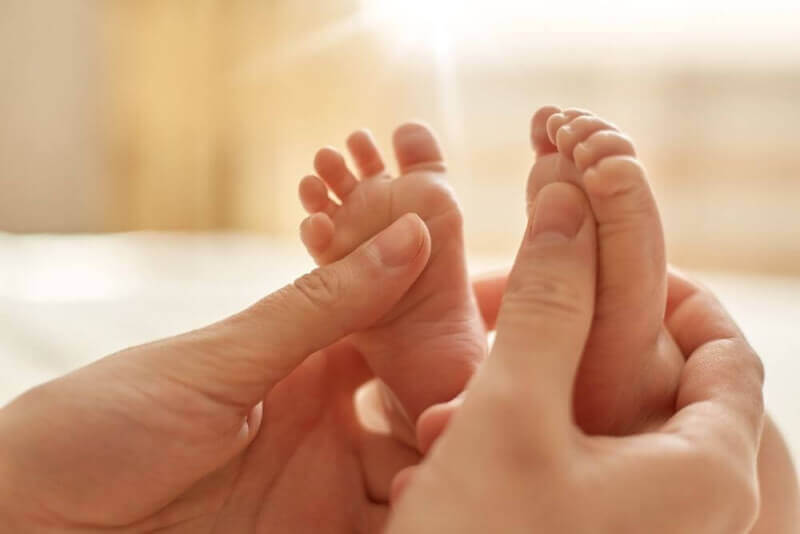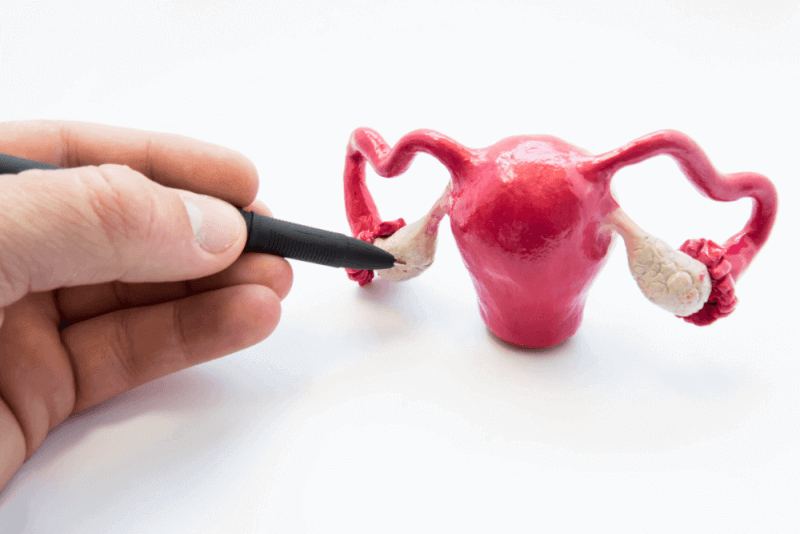What is prematurity?
Baby 37. The condition of being born before the week is called prematurity, that is, premature birth. The earlier the baby is born, the greater the health risks. Premature babies are divided into various groups according to the weeks they were born. According to this:
- Born between 34 and 36 weeks late premature
- 32 to 34. Those born between weeks of gestational age are moderately premature
- 28 to 32. those born between weeks of gestational age premature babies born very early
- Those born before 28 weeks are extremely premature premature babies
Characteristics of premature babies
Among the features that can be seen in premature babies are the following.
- Small body and a head that is larger than the body
- Eyes that are less sharp and less round than those of full-term babies due to a lack of fat-storing cells
- Fine hair on most of the body
- Low body temperature immediately after birth
- Breathing difficulties
- Nutrition problems
Risks of premature birth
Not all premature babies have health problems. However, babies born very prematurely are more likely to have health problems in the short and long term. In other words, the earlier the baby is born, the greater the complications.
Short-term complications
Short-term complications are defined as health problems that begin after the birth of the baby and continue in the first weeks of life, and include the following.
Respiratory problems
Premature babies may have breathing problems because their development is not fully completed. Babies have difficulty getting enough air, especially if the substance that allows the lungs to expand is deficient. This is called respiratory distress syndrome.
It is also common for premature babies to experience pauses in breathing called apnea. They are especially common when they return home after hospitalization. Some premature babies may develop a rare lung disease called bronchopulmonary dysplasia. These babies need oxygen for several weeks or months and usually overcome this problem.
Heart problems
Common heart problems in premature babies include patent ductus arteriosus (PDA) and low blood pressure. PDA refers to an opening between the aorta and the pulmonary artery. PDA also usually closes spontaneously. However, if left untreated, it can lead to problems such as heart failure. When heart failure occurs, the heart cannot pump as much blood as it should. Babies with low blood pressure are treated with intravenous fluids, medicines and, in some cases, blood transfusions.
Brain problems
The earlier the baby is born, the higher the risk of a brain hemorrhage. This is called intraventricular hemorrhage. Most brain hemorrhages in premature babies are mild and resolve quickly. However, some babies may also have major brain hemorrhages that cause permanent brain damage.
Temperature control issues
Because premature babies have fewer fat cells than full-term babies, premature babies have difficulty maintaining their body temperature after birth. Their body temperature can drop considerably as they cannot compensate for the heat lost through the surface of their body. If the body temperature drops too low, it is called hypothermia.
Hypothermia in the premature baby can lead to breathing problems and low blood sugar levels. These babies can use all the energy from feeding only for heating. To prevent this, they need extra warmth in the incubator after birth.
Digestive problems
Premature babies are more likely to have incompletely developed digestive systems. This can lead to a problem called necrotizing enterocolitis. This problem causes injury to the cells lining the intestinal wall. Nerve problems that occur after babies start feeding are less common in premature babies who are exclusively breastfed.
Blood problems
Premature babies are at risk for blood diseases such as neonatal jaundice and anemia. Although anemia is a condition in which the body does not have enough red blood cells, it is normal for newborns to have a slow decline in red blood cell count during the first months of life. However, this decline is greater in premature babies.
When the newborn is hugged, the eyes and skin turn yellow. This is because the baby's liver is not fully developed. This means that the yellow matter in the red blood cells is not sufficiently filtered. This substance is called bilirubin. Although jaundice can occur for many reasons, it is more common in premature babies.
Immune system problems
Infants' immune systems are not fully developed and this is one of the most common health problems. An underdeveloped immune system increases the risk of disease and causes infections to spread rapidly through the bloodstream. Sepsis is a life-threatening problem, although it is given.
Long-term complications
Long-term health problems in premature babies include the following.
Cerebral palsy
The cerebral palsy group causes problems with muscle tone or posture in babies. The cause may be infection or poor blood flow. In addition, cerebral palsy can be caused by injuries to the baby's brain in the early stages of pregnancy or during the newborn period.
Learning problems
Children born prematurely are more likely to fall behind in developmental milestones than children born at term. In addition, premature babies born very early are more likely to have learning disabilities when they reach school age.
Vision problems
Babies born prematurely can develop a visual impairment called retinopathy of prematurity. Retinopathy of prematurity is a condition in which the blood vessels in the area of light-sensitive nerves in the back of the eye, called the retina, swell and interfere with vision. In some cases, swollen blood vessels cause injury to the retina. Retinal detachment, defined as the detachment of the retina from the back of the eye, can also be seen. Untreated detachment can lead to blindness.
Hearing problems
Hearing loss in premature babies is one of the most likely health problems. For this reason, hearing tests should be carried out as soon as possible before returning home from the hospital.
Tooth problems
Premature babies are likely to have problems with the enamel that forms the hard and outer part of their teeth. In addition, it is also possible for tooth development to take longer.
Behavioral and mental problems
In addition to developmental problems, premature babies may also have certain mental health problems.
Ongoing health problems
Premature babies are more likely to have long-term health problems than full-term babies. In addition, the likelihood of asthma and nutritional problems is high. Finally, sudden infant death rates are also higher in premature babies.
Premature baby development
Each baby develops at its own pace. However, for calculating milestones in premature babies, the age of the baby needs to be calculated. To calculate the adjusted age of premature babies, the number of weeks the baby was born prematurely must be subtracted from the number of weeks since the baby's date of birth. The result will be the corrected age of premature babies. When evaluating the development of premature babies, their corrected age should be accepted as the basis. Milestones in the development of premature babies are as follows.
1st month
The expected development of babies in the first months of life is as follows.
- It looks at its parents and follows them with its eyes.
- They put their hands to their mouths in behaviors that make them feel comfortable.
- They are often anxious. They only calm down when spoken to or held
- They look at things briefly.
- They can make short vowel sounds.
- They are alerted to unexpected sounds.
- They turn in the direction of their parents' voices
- There are different types of cries for hunger and fatigue.
- They can move both arms and legs at the same time
- They keep their chin up when they are on their stomach.
- During rest, they spread their fingers slightly.
2nd month
The 8th birthday of their premature baby They are expected to demonstrate the following developmental stages by the end of the week.
- They smile in response.
- They make sounds that indicate whether they are happy or sad.
- They can open and close their hands.
- They put their hands together for a short time.
- They can lift their chest and head when lying face down.
- They can keep their head still when held in a sitting position.
4th month
Babies are 16. The developmental milestones they are expected to show at the end of the week include the following.
- Laughing out loud
- They call their parents or caregivers when they are upset.
- Sounds begin to transform
- They start to make long consonants.
- Support themselves on their elbows and wrists while on the abdomen.
- They start rolling
- They can hold their hands open.
- They play with their fingers in the middle of the body.
- Starts to grasp objects.
Month 6
Premature babies are 24. The developmental stages that are expected to be completed when they have not completed their weeks include the following.
- They react to their own reflection.
- They react when their name is called.
- They start babbling by dropping syllables.
- They can sit without support for short periods of time.
- They can roll over when placed on their backs.
- They can pass their toys from one hand to another.
- They pick up small objects with the nails of their 4 fingers.
9th month
Babies 36. Among the developments observed in babies when they complete their weeks are the following.
- They start to use basic gestures such as waving or stretching out their arms.
- They look for falling objects.
- They start playing games like Cee eee
- They constantly react when their name is called.
- They can vaguely say mother or father.
- When asked questions like where is your toy, they start to look around.
- They imitate the sounds their parents or caregivers make.
- They can sit well without support.
- They hold on to stand up.
- They can sit and lie down with ease.
- Crawls on hands and knees.
- They take food to eat.
- They can catch small objects with their 3 fingers.
- They drop objects consciously.
- They knock objects together.
12th month
The developmental stages expected when babies reach 48 weeks or 1 year of age include the following.
- They look for hidden objects.
- They imitate new movements.
- Mom and dad use words on purpose.
- They ask for objects by pointing.
- They take their first steps.
- They can stand without support.
- They can put small objects in tight spaces such as cups.
- They can buy their own food.
15th month
Among the milestones that are expected to take place when babies are 60 weeks old are the following.
- They imitate scribbling.
- They can drink liquid from a glass.
- They can ask questions or ask for help.
- After questions such as where are your toys, they start looking for the object.
- They can use 3 words other than their name.
- They speak an unknown language.
- They follow instructions that do not involve movement.
- They squat to pick up objects.
- They can climb a few steps.
- They can run.
- They start painting with crayons.
- They can take objects out of the cup.
Month 18
72 of premature babies. The expected stages of development once they have completed their week are as follows.
- They interact with other people for play.
- They start dressing and undressing themselves.
- They point to the object to get their parents' attention or if they are interested in the pictures in the book.
- They look to adults in case a new situation arises.
- They start using spoons.
- They start using words to ask for help.
- They begin to identify at least 2 body parts.
- Can name at least 5 familiar objects.
- They can climb the stairs when they are held by the hand.
- They can sit on the small chair.
- They can scribble on their own.
- From a standing position they can throw a small ball several meters away.
Month 24
By the time babies are 2 years old, the following steps should have been taken in their development.
- They can play together with other children.
- They can take off some of their clothes.
- They can be mixed with a spoon.
- They use at least 50 words.
- They can combine 2 words in a simple way.
- They can follow 2-word instructions.
- They can name at least 5 body parts.
- Foreigners understand about 50% of the words they use.
- They can kick the ball.
- They can jump with 2 legs.
- They can work in coordination.
- They can climb ladders in playgrounds.
- They can stack objects into piles.
- They can turn the pages of a book.
- They can use their hands to turn objects.
- They can draw lines.
2.5 years old
Among the stages that premature babies should realize when they are 2.5 years old are the following.
- They can complete toilet training.
- They can eat with a fork.
- They can wash and dry their hands.
- They play an increasing amount of imaginary games.
- They may ask their parents to watch them by saying look at me.
- They can use pronouns correctly.
- They can walk by changing their steps.
- They can prevent them from falling.
- They can draw vertical lines.
- They hold crayons using their thumb and index fingers.
- They can catch big balls.
3 years old
Among the milestones that children need to overcome in their first 3 years of life are the following.
- They can go to the toilet on their own.
- They can put on their coats without help.
- They can eat without help.
- They can participate in imaginary games.
- They can play with others and share their belongings.
- They can form 3-word sentences.
- 75% of the words they use are understood by foreigners.
- They can tell stories from the book or the video.
- They can compare objects.
- They understand prepositions such as on or under.
- They can pedal tricycles.
- They can get on and off the sofa or chair.
- They can jump forward.
- They can draw a circle.
- They can draw pictures of people with a head and body.
- Children can use scissors.
4 years old
The stages of development that children go through when they are 4 years old include the following.
- They can go to the toilet and defecate on their own.
- They can brush their teeth.
- They can dress and undress without much help.
- They can participate in well-developed creative play.
- It can answer hypothetical questions such as what do you do when you are cold?
- 4-word sentences can be formed.
- Foreigners can understand all the words they use.
- They draw identifiable pictures.
- They follow simple rules in board and card games.
- They can tell the parent a story from a book.
- They can jump on one leg.
- They can climb stairs by changing their feet without assistance.
- They can draw a human picture with at least 3 body parts.
- They can draw simple crosses.
- They can unbutton and button medium-sized buttons.
- They can hold a pencil with their thumb and index fingers.
5-6 years old
The developmental stages to be seen in children in this age group, which coincides with the preschool period, include the following.
- They can follow simple instructions.
- They can wear clothes that can be worn on the arm without assistance.
- They have a good command of the language.
- They can count to 10.
- They can name 4 or more colors.
- They can balance on one leg.
- They can jump.
- They can tie knots.
- They can draw pictures of people with at least 6 body parts.
- They can write some letters or numbers.
- They can draw a square or a triangle.
School age
Babies born prematurely may have physical and mental problems that persist into school age. This requires communication with teachers and other school personnel to identify problem areas in school-age children. In case of problems with the child's development, it is recommended to contact the child's doctor. At this stage, the following questions need to be answered in order to assess the child's development.
- How does my child like to communicate?
- Can he/she communicate what he/she is thinking and feeling?
- How does the child like to discover how to use his/her body?
- Does he prefer to use his small muscles?
- Does he prefer to use his big muscles?
- How does it react to new situations?
- Does he/she prefer to stay back and look around before he/she feels safe?
- What kind of objects and activities are they interested in?
- What do their interests say about the child?
- What are the child's strengths?
- In which areas does the child need more support?
Nutrition in premature infants
Nutrition is even more important for premature babies so that their development can continue smoothly. Proper early nutrition during this critical period of brain development is of great importance for long-term neurodevelopmental development.
Premature babies have fewer nutritional reserves at the time of birth, especially those with growth problems in utero. In addition, respiratory problems and infections in premature babies can also adversely affect their nutrition. The intrauterine growth and nutritional balance of premature infants is maintained in the light of the data obtained from studies in order to ensure that their development continues smoothly. These studies aim to ensure that premature babies develop in the same way as babies born at term. However, no matter how much attention is paid, some problems in premature babies can cause feeding not to be carried out properly. This leads to nutritional deficiencies.
The nutritional values that premature babies need daily are as follows.
- 110- 120 kcal per kilogram
- 3- 3.8 grams of protein per kilogram
- 4.5-6.8 mg fat per kilogram
- 120 - 230 mg calcium per kilogram
- 60- 140 mg phosphorus per kilogram
Enternal nutrition
Babies older than 34 weeks of gestational age have improved coordination of swallowing, sucking and breathing. However, in babies born younger than 34 weeks, incomplete neurological maturation and respiratory problems can make oral feeding impossible. In this case, babies are fed through a thin feeding catheter passed through the nose or mouth into the stomach.
Necrotizing enterocolitis
The biggest concern with internal feeding is the extra burden of feeding babies with underdeveloped digestive systems. This leads to the risk of necrotizing enterocolitis. The risk of necrotizing enterocolitis is inversely related to gestational age and birth weight.
The incidence of necrotizing enterocolitis varies between 5% and 10% in very low birth weight babies. The mortality rate is over 20%. Long-term morbidity, significant neurodevelopmental problems, poor nutritional outcomes and vulnerable development and infections can also occur.
Which milk should be used?
Breast milk is primarily recommended for the universal feeding of premature infants. Breast milk can be taken from the baby's mother or from a donor mother. The important point in the use of breast milk is the nutrient content of the expressed milk and the stage of lactation at which it is collected. The donor's milk from the breast-fed breast is richer in nutrients than milk from the other breast.
Breast milk, especially from a donor, may not meet all the needs of the baby. To achieve the targets, various nutritional supplements are added to breast milk. Calcium and phosphorus in these supplements support bone development. Energy protein supplementation accelerates weight gain and head growth in the short term.
Breast milk has non-nutritional advantages as it plays an important role in the development of the immune system of infants. In addition, compared to formula, breast milk reduces the risk of food intolerance and digestive diseases in infants.
Formula food
Although the mother is supported, breast milk may not always be available. In this case, premature babies are fed with various formula foods, especially modified cow's milk. These foods are generally enriched with calories, protein and minerals. Formula feeding very preterm babies is known to help them gain weight, grow their heads and prevent some important neurodevelopmental problems.
Parenteral nutrition
Babies who are not suitable for internal feeding or who are starting enternal feeding should be fed parenterally. Intravenous nutrition is a form of intravenous nutrition applied for feeding this problem, which is especially seen in infants with delayed gastric emptying and intestinal peristalsis.
Fats are used as an energy source in parenteral nutrition. It also contains electrolytes, minerals and vitamins in solution, as well as glucose and amino acids. The most common side effect of parental feeding is bloodstream infection.
Nutrition after leaving the hospital
It is common for premature babies to experience accumulated nutritional deficiencies at discharge. Babies who are exclusively breastfed need to take vitamin and iron supplements for the first 6 months. For infants with additional metabolic requirements and chronic lung disease, formula is recommended.
Among the points to be considered in the nutrition of premature babies after discharge are the following.
- Babies should be held at a 45-degree angle during feeding.
- It is necessary to check that the bottle flow rate is suitable for the baby.
- The temperature of the food should be controlled.
- It is important that the person feeding the baby is in a comfortable position.
- If the baby first sucks and then falls asleep, it is recommended to burp and continue feeding.
- Premature babies get tired quickly during sucking because their jaw muscles are not fully developed. They need to be supported with a finger under their chin so that they can suck longer.
- The duration of their feeding should not exceed 30 minutes.
- After feeding, the baby should be tilted to the right and left so that the head is 10 degrees upright.
- It is common for milk to get into the baby's trachea during feeding. Therefore, care must be taken.
- Careful observation of the baby's color and movements during feeding is necessary.
How often should premature babies be fed?
Premature babies are fed every 3 hours in the hospital. It is recommended to continue this pattern at home. However, some deviations in nutrition are natural. For this reason, babies should be fed every 4 hours at the latest.
Weight in premature babies
A growth curve is used to monitor the growth of babies born at term. However, this curve is used for premature babies because premature babies spend part of their development outside the womb. Special curves are used to monitor the development of premature babies. These special curves are used up to the normal delivery time of the babies. Afterwards, babies are followed up according to their corrected age.
Babies born on time are expected to gain 30 grams per day in the first three months and 20 grams per day between 3 and 12 months. For premature babies, the amount they should take daily in this process is in the range of 15 to 20 grams. Premature babies are expected to catch up with normally born babies by the age of 2 years.
The rate of growth in height of premature babies is also different from that of babies born at term. Babies born at term should grow an average of 0.75 cm per week in the first 3 months and 0.5 cm per week between 3 and 13 months. Premature babies are expected to grow between 0.8 and 1 cm in height per week during this period. The first 3 years are critical for the height of premature babies.
Another important value in the development of premature babies is the head circumference. The head circumference, which is an important criterion in determining the neurological development of babies, is 1 cm in the first 2 months and 3-4 cm in the first 3 months of life. It should increase by 0.5 cm during the months and by 0.7 cm weekly thereafter. The critical age for the development of the head circumference is 1 year.
How does the brain development of premature babies progress?
When the brain structures of premature babies at later ages are examined, it is observed that cerebral volumes decrease especially in children between the ages of 7 and 15 who were born prematurely. In addition, cortical gray matter, cortical white matter, cerebellum and basal ganglia also have lower volumes.
In addition, it has been observed that different parts of the brain are more vulnerable in the developmental processes of premature babies. This change varies in male and female babies. Frontotemporal and hippocampal regions are most affected by these changes. The left hemisphere of the brain is also affected more than the right hemisphere. Premature boys are more likely to be affected by white matter abnormalities than premature girls. Despite these data, the impact of these changes in the brain of premature babies on the brain is not fully understood.








